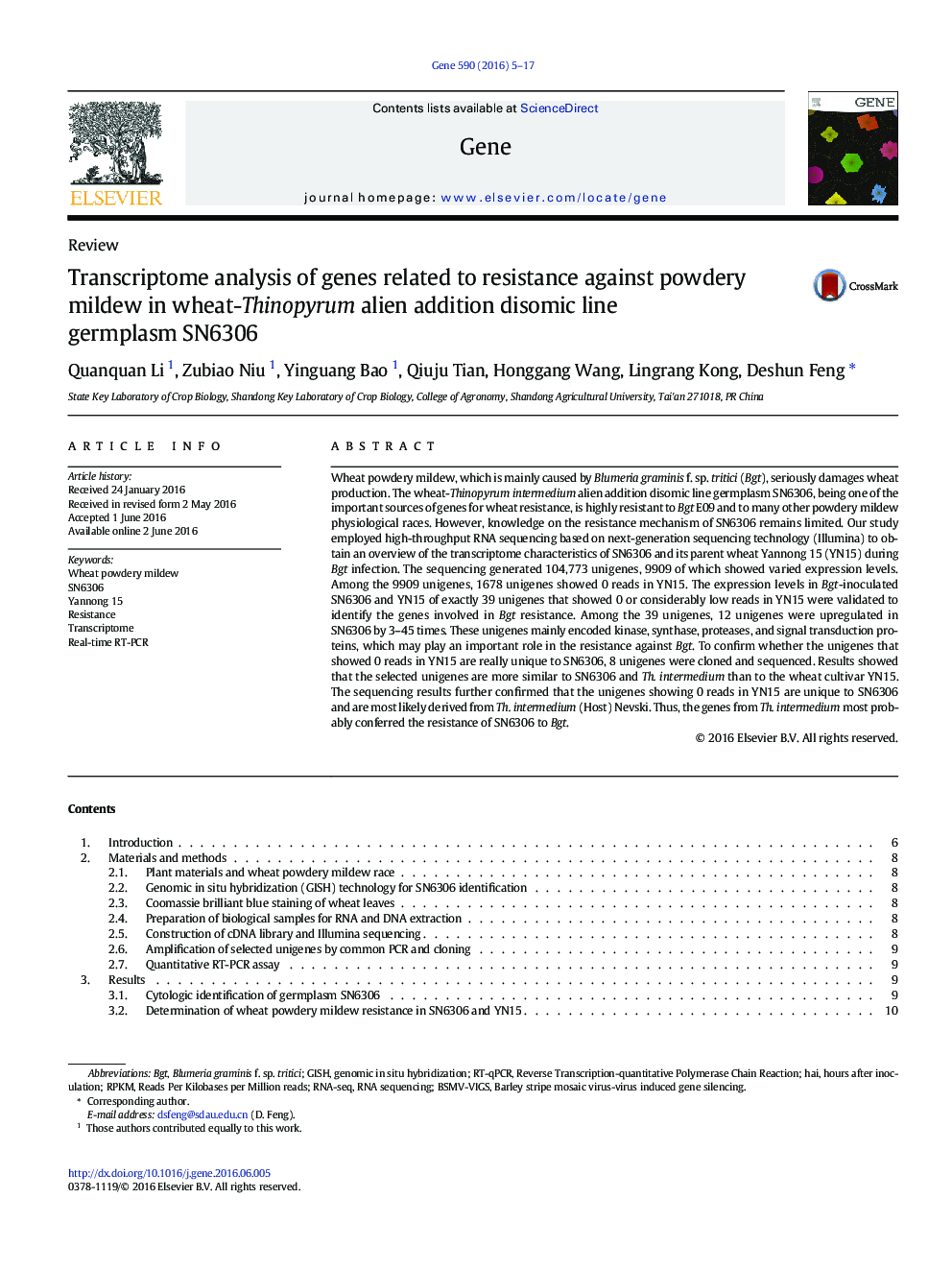| Article ID | Journal | Published Year | Pages | File Type |
|---|---|---|---|---|
| 2814866 | Gene | 2016 | 13 Pages |
•SN6306 is a wheat-Thinopyrum intermedium alien addition disomic line germplasm.•The sequencing generated 104,773 unigenes, among them 9909 showing varied expression levels.•There were 12 of 39 unigenes that were validated to be involved in Bgt resistance.•Eight unigenes were cloned and showed that they were similar to those from Th. intermedium.•The RLKs, ent-CPS and AP may play an important role in Bgt resistance.
Wheat powdery mildew, which is mainly caused by Blumeria graminis f. sp. tritici (Bgt), seriously damages wheat production. The wheat-Thinopyrum intermedium alien addition disomic line germplasm SN6306, being one of the important sources of genes for wheat resistance, is highly resistant to Bgt E09 and to many other powdery mildew physiological races. However, knowledge on the resistance mechanism of SN6306 remains limited. Our study employed high-throughput RNA sequencing based on next-generation sequencing technology (Illumina) to obtain an overview of the transcriptome characteristics of SN6306 and its parent wheat Yannong 15 (YN15) during Bgt infection. The sequencing generated 104,773 unigenes, 9909 of which showed varied expression levels. Among the 9909 unigenes, 1678 unigenes showed 0 reads in YN15. The expression levels in Bgt-inoculated SN6306 and YN15 of exactly 39 unigenes that showed 0 or considerably low reads in YN15 were validated to identify the genes involved in Bgt resistance. Among the 39 unigenes, 12 unigenes were upregulated in SN6306 by 3–45 times. These unigenes mainly encoded kinase, synthase, proteases, and signal transduction proteins, which may play an important role in the resistance against Bgt. To confirm whether the unigenes that showed 0 reads in YN15 are really unique to SN6306, 8 unigenes were cloned and sequenced. Results showed that the selected unigenes are more similar to SN6306 and Th. intermedium than to the wheat cultivar YN15. The sequencing results further confirmed that the unigenes showing 0 reads in YN15 are unique to SN6306 and are most likely derived from Th. intermedium (Host) Nevski. Thus, the genes from Th. intermedium most probably conferred the resistance of SN6306 to Bgt.
